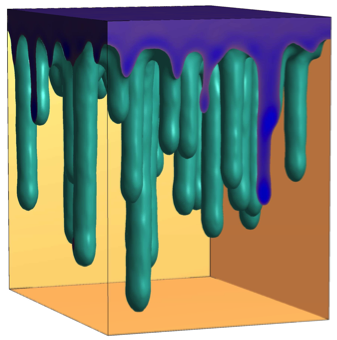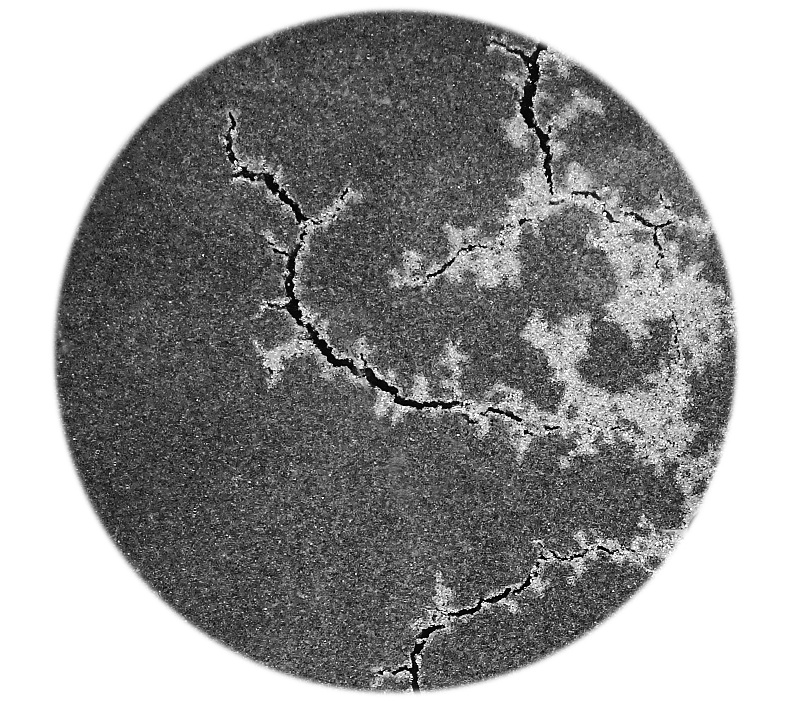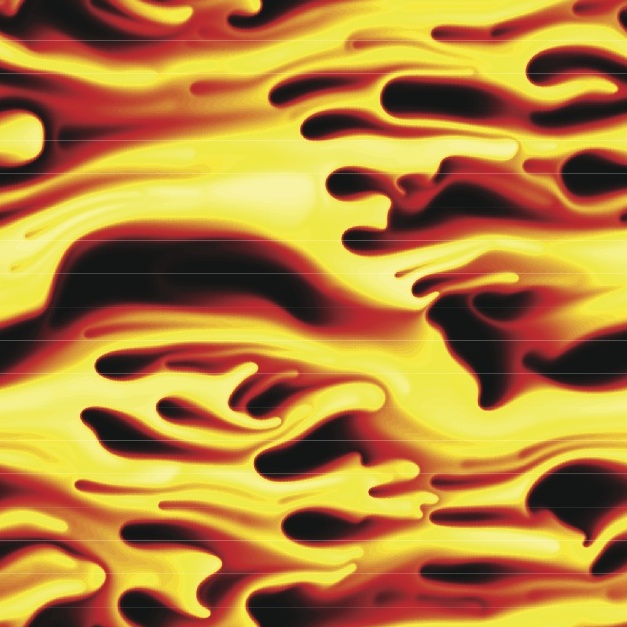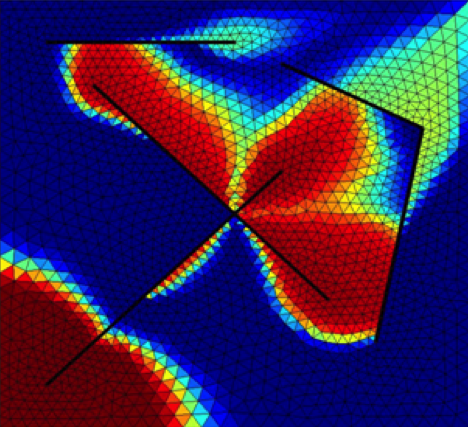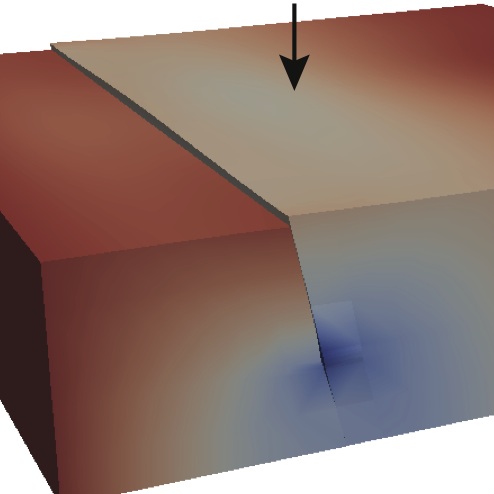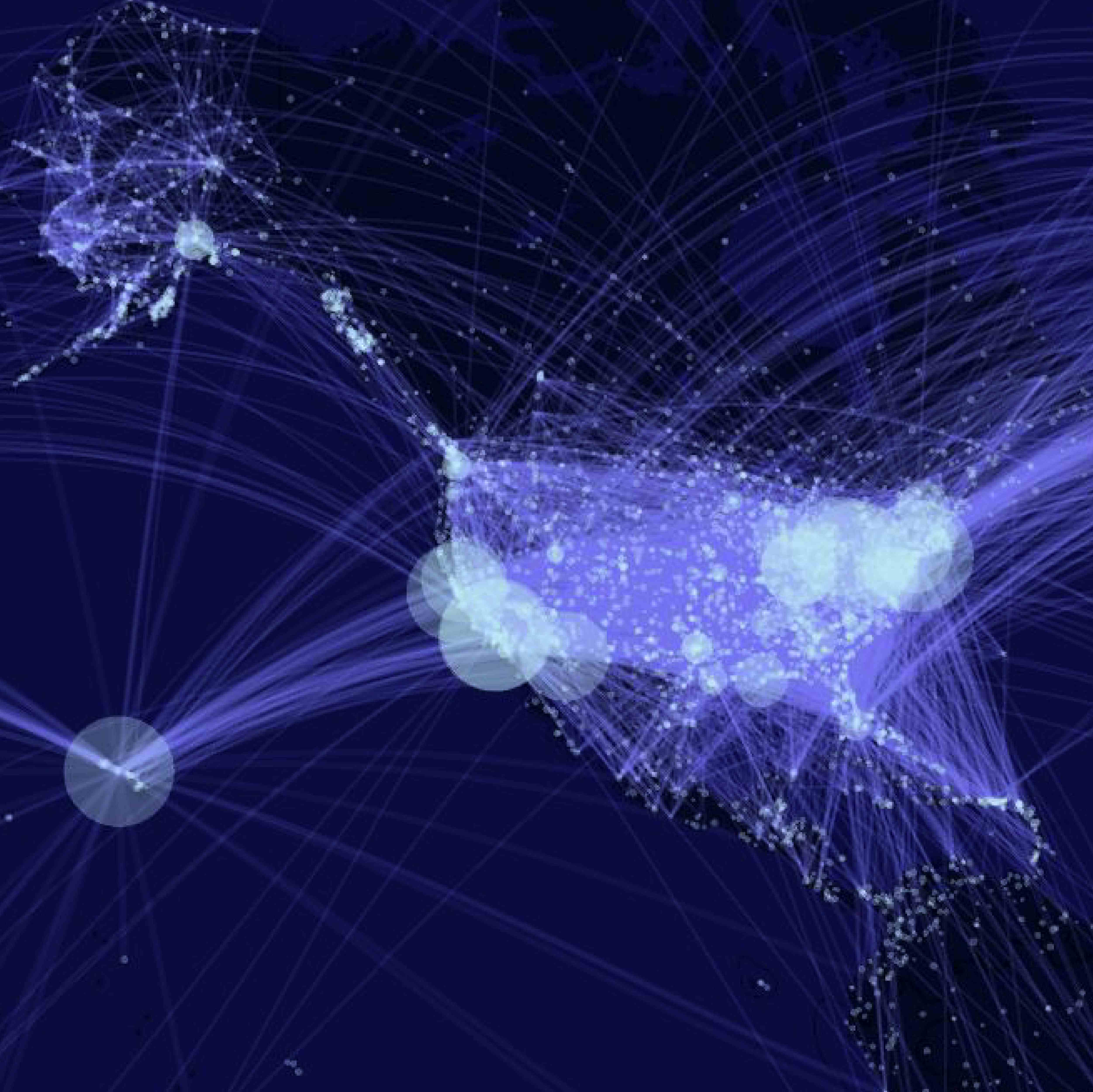Phase-field modeling of multiphase flow
The displacement of one fluid by another in a porous medium can give rise to a rich variety of hydrodynamic instabilities. Beyond their scientific value as fascinating models of pattern formation, unstable porous-media flows are essential to understanding many natural and man-made processes, including water infiltration in soil, enhanced oil recovery from hydrocarbon reservoirs, and CO2 sequestration in deep saline aquifers. The inability of traditional continuum equations to reproduce the formation of the complex patterns observed in experiments highlights the need for new theoretical approaches. Our research group has developed a new paradigm for modeling multiphase flow at the continuum scale—phase-field modeling—which recognizes explicitly that fluid-fluid displacements are out of thermodynamic equilibrium. (Read more)
Geological CO2 sequestration
In carbon dioxide capture and storage (CCS), CO2 is captured from the flue gas of power plants and then injected underground into geologic reservoirs like deep saline aquifers for long-term storage. While CCS may be critical for the continued used of fossil fuels in a carbon-constrained world, its deployment has been hindered by uncertainty in geologic storage capacities and sustainable injection rates. Our work has addressed this critical question (how much can be injected?) by developing storage capacity estimates that, unlike previous estimates, are based on the fluid mechanics of CO2 injection, migration, and trapping. (Read more)
Gas migration in unconsolidated sediments
Methane is a potent greenhouse gas, but its effects on Earth’s climate remain poorly constrained, in part due to uncertainties in global methane fluxes to the atmosphere. An important source of atmospheric methane is the methane generated in organic‐rich sediments underlying surface water bodies, including lakes, wetlands, and the ocean. The fraction of the methane that reaches the atmosphere depends critically on the mode and spatiotemporal characteristics of free‐gas venting from the underlying sediments, which in turn is controlled by the interplay between gas migration and sediment mechanics. Our research group has developed grain-scale computational model and carefully-controlled laboratory experiments to investigate the coupling between multiphase fluid flow and sediment mechanics. (Read more)
Mixing in porous media
The rate at which fluids mix in a porous medium controls the rate at which reactions occur, or the rate at which the physicochemical properties of the mixture (such as fluid density and viscosity) vary. Determining and possibly enhancing mixing is critical in both microfluidic devices and in geologic processes like improved oil recovery by miscible flooding or CO2 sequestration. (Read more)
Flow through fractured media
Flow through fractures is essential in the risk assessment of nuclear waste disposal, oil and gas production from fractured carbonates, and leakage risk in geological CO2 storage. It is well known that flow through fractures leads to anomalous transport, that is, to spreading and mixing behavior that deviates from classical diffusion. Our goal is to find an effective (stochastic) macroscopic description of transport through fracture networks, first for simple lattice models, and then for geologically realistic fracture networks. New quantitative understanding of flow and transport through fractured media could prove instrumental in model inversion and risk assessment. (Read more)
Coupled flow-geomechanics and induced seismicity
Coupled flow and geomechanics has emerged as one of the critical research areas in reservoir science and engineering. While the recognition that flow and deformation are strongly-coupled processes is not new, current tools are insufficient to adequately forecast reservoir deformation in response to oil and gas production, especially in stress-sensitive or faulted reservoirs. We have developed efficient algorithms for sequential coupling flow and deformation, and implemented them in a unique modeling tool for the simulation of coupled flow and geomechanics in fractured and faulted reservoirs. (Read more)
Dynamic processes on complex networks
The study of dynamic processes that take place in complex networks has emerged as one the most exciting areas of research in a wide variety of scientific fields, from statistical physics and systems biology to human mobility and the social sciences. We study transport and epidemic spreading in human mobility networks. We are particularly interested in behavioral feedbacks, where individuals dynamically change their strategies, therefore shaping the network efficiency and robustness. (Read more)
Our research is sponsored by the US Department of Energy, the National Science Foundation, Eni S.p.A., KFUPM, ExxonMobil, Saudi Aramco, Masdar, Schlumberger, the MIT-MISTI program, the ARCO Chair, the Winslow Chair, the McClelland Fund, the Reed Fund, the Hayashi Fund, and the MIT Energy Initiative. We are very grateful for their support.
